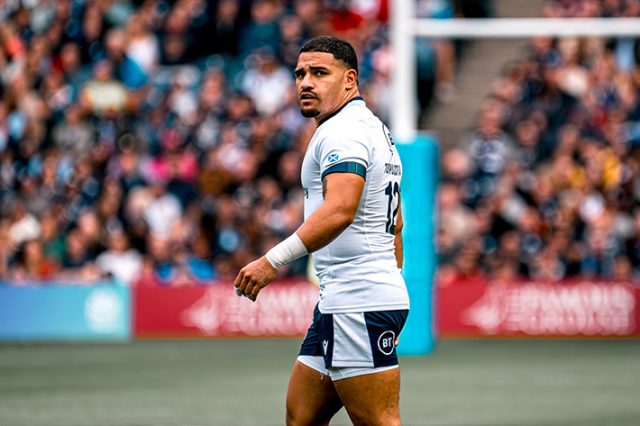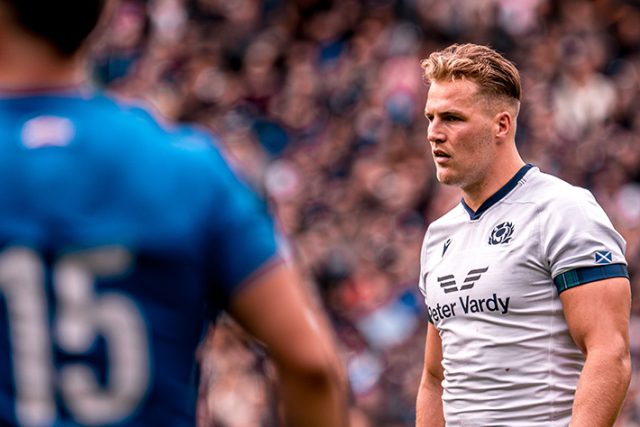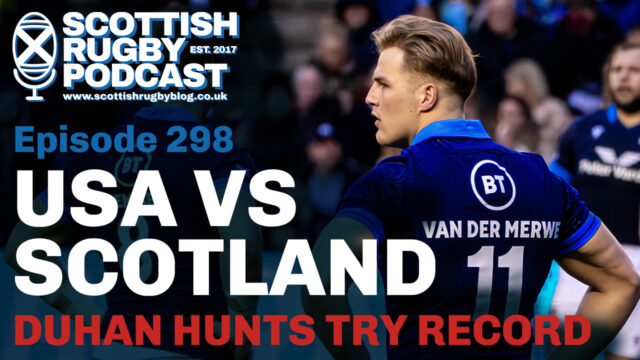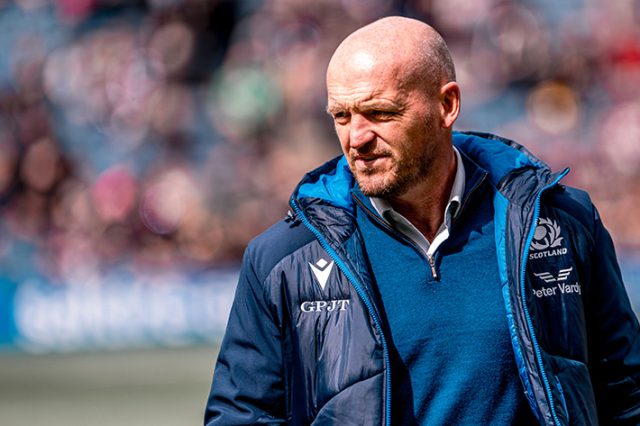It was while watching the young Toulousain, Jean-Marc Doussain, who came off the bench to win his first cap in the World Cup final, that I begun reflecting on the French tradition of inter-changeable half-backs, and wondered why the Anglo-Saxon nations had never adopted this way of looking at the game.
Every nation has these ingrained quirks and preferences. New Zealand long favoured the second five-eighth over the English crash ball centre, and so on.
But now, finally, Scotland might pick a stand-off in Greig Laidlaw who has evolved as a scrum-half too, so maybe it is a developmental ploy that we should be taking more seriously.
Alan Massie, one of the more lucid rugby thinkers in the employ of Johnston Press, wrote an article many years ago about the possibility of converting Mike Blair to a fly-half and pairing him with Chris Cusiter – that way, we’d have our two best players on the pitch. Typically, such original thinking was shouted down, the shouters’ eyes blinded by their traditional thoughts on what a stand-off ought to be.
But in rugby terms, it makes sense to cloud the distinction between the positions. So often the 9 runs past the 10, thereby making the ball slower. Age-grade ‘patterns’ have impressively cottoned on to this fact and so the 9 and 10 do switch yet very little time is spent improving the 10’s scrum-half pass or box-kick. If this is something we are going to commit to then the skills coaching has to reflect this half-back duality.
The benefits of the French system are numerous. Sharing responsibility takes pressure off the 10 – he doesn’t have to make so many decisions. The ‘cult of the 10’ that characterises British rugby at the moment leads to the 10 being overly praised and overly criticised. This is partly a reaction to Mr Wilkinson and his (fully justified) deification – though it means that every 10 who follows has to ‘steer’ the team, kick all the goals, throw all the right passes. It’s illogical. The French realise that the 10 has enough on his plate trying to spark the backline that they even take the pressure of goal-kicking off him.
So if we are going to adopt the French model then we have to loosen our grip on the cult of the 10 and the weight of expectation that falls on their shoulders. In France, 10s are not coached to control the game. Instead all focus is on the skills of passing and catching, running onto the ball and delivering effective passes. This is the bread and butter, not the pin-point kicks to the corner that ‘put their team in the right places’.
Last year, I wrote about my conversation with a coach in which we discussed the differing attitudes to the development of 10s, fly-halves, stand-offs and second 5/8ths. It’s worth quoting:
“On the topic of fly-halves and the ‘controlling of the game’, for the French, they only worry about that side of the game when the player is a bit older, certainly older than me, and definitely only once they have mastered getting a backline moving and attacking the line – the basics.”
While on the topic, it should be stated that positional specialisation is just one damaging way in which British players ‘grow up too fast’. We start contact too early and we pigeon-hole players at too young an age, to the detriment of their general basic skills.
It is worth looking back to recent French examples of the model. Michalak/Elissalde worked for many years, with the Toulousains having the same time in a club environment that Blair/Laidlaw have to build up the understanding that is necessary to make this blurring of the roles work. That is why Elissalde was always preferred to Yachvili, who was also slightly less adept at first-receiver. The World Cup saw Yachvili/Parra tried out. While lambasted in the press, I don’t actually agree that it was a failure, and Parra proved himself quite capable of playing first-receiver. Francois Trinh-Duc is more a ‘traditional’ stand-off in that he is incapable of playing 9. However, he is far from British in the way he plays. He doesn’t kick goals (regularly) and it could not be argued that ‘controlling a game’ is his outright strength. Like Michalak, he is a runner and a passer.
It’s time Britain and Scotland in particular left behind the ‘cult of the 10’ and moved on to more logical rugby. Let’s hope the emergence of Greig Laidlaw leads to a sea-change of attitudes at youth level where players are not told they are a stand-off and handed a large, metaphorical weight of expectation, but instead told they are half-backs and play-makers. Edinburgh have reaped the benefits this season – let’s hope Scottish rugby learns from this so that multi-talented, skilful players like Laidlaw become the norm and not the exception.






